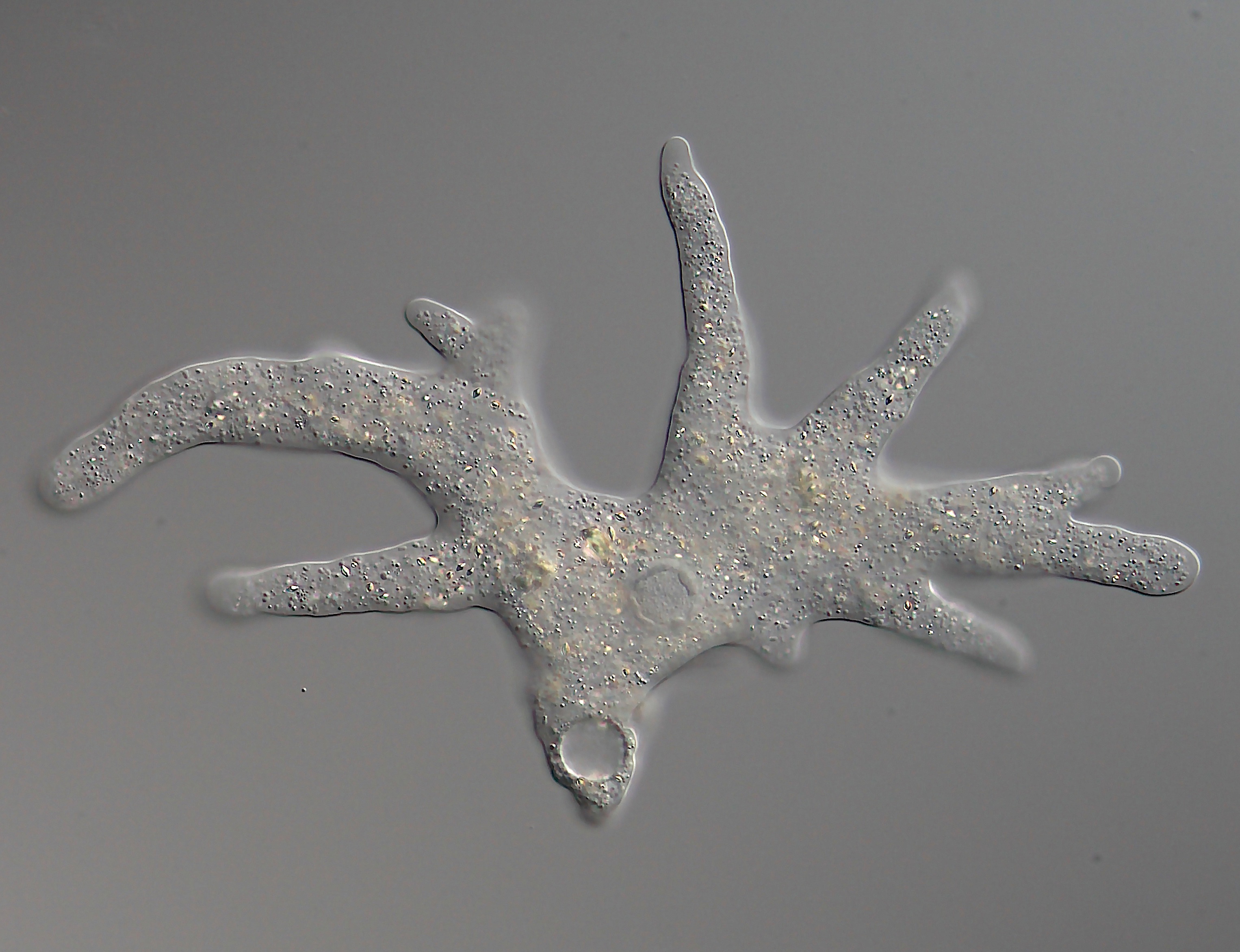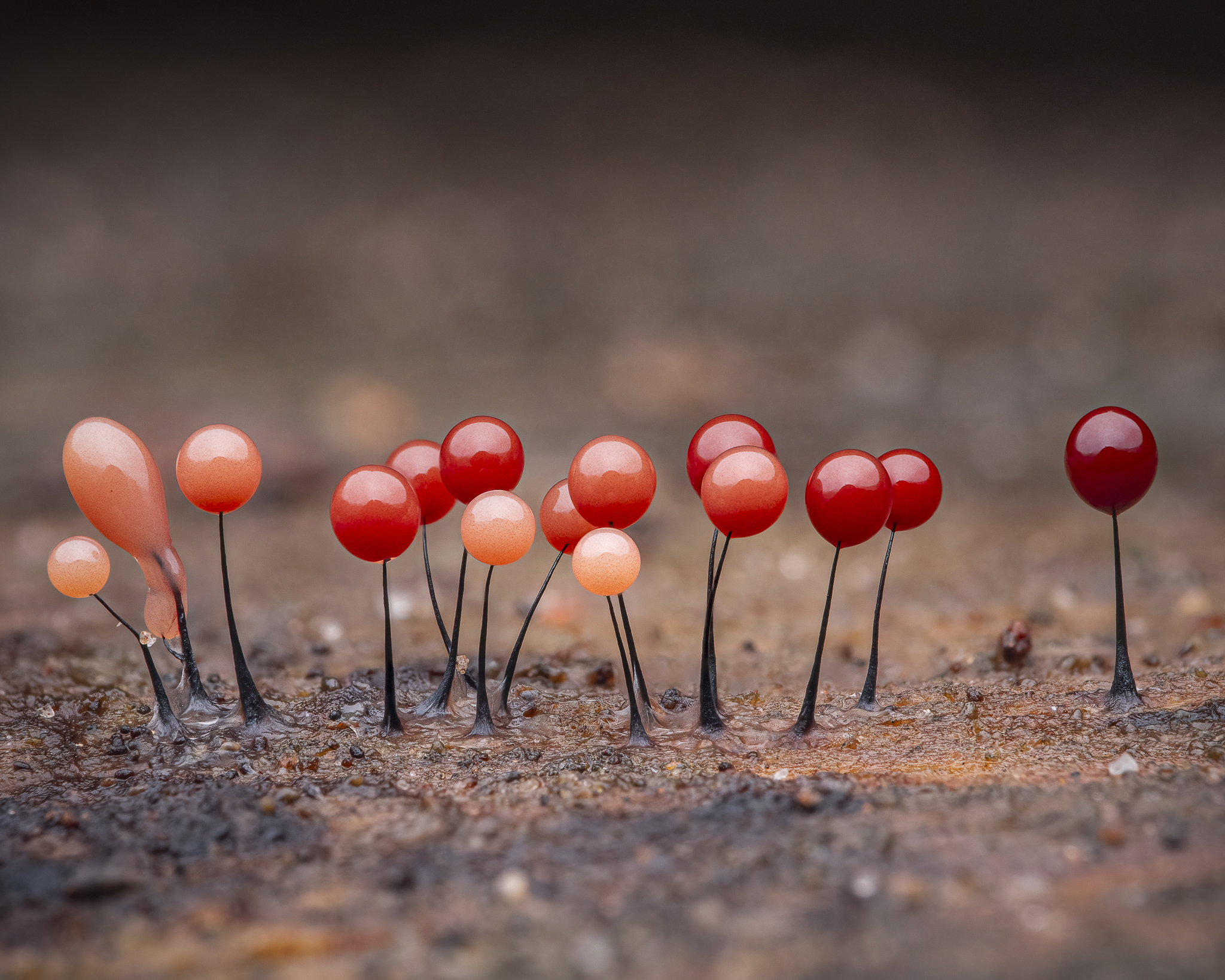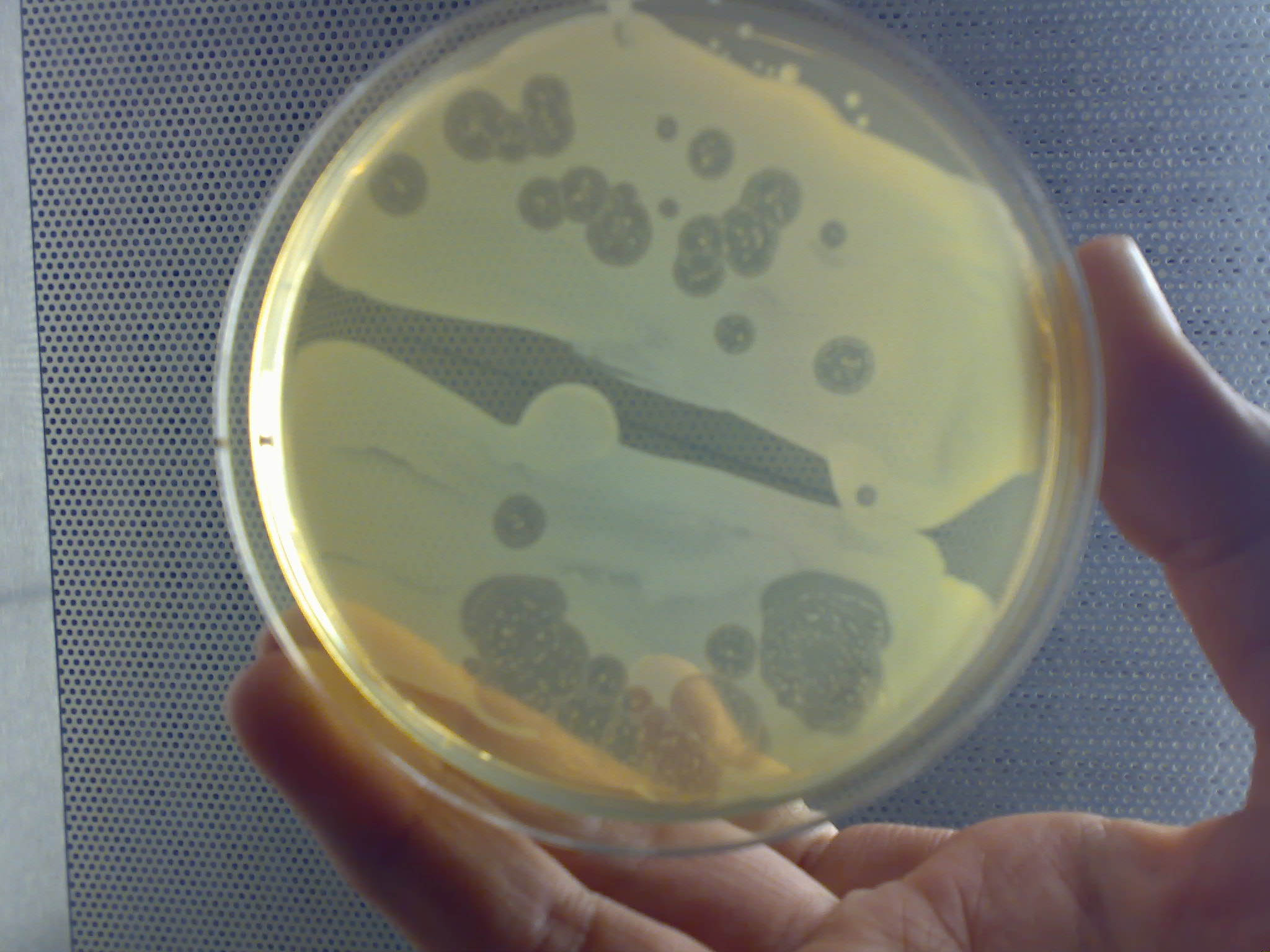|
Mycetozoan
Mycetozoa is a polyphyletic grouping of slime molds. It was originally thought to be a monophyletic clade, but in 2010 it was discovered that protostelia are a polyphyletic group within Conosa. Classification It can be divided into dictyostelid, myxogastrid, and protostelid groups. The mycetozoan groups all fit into the unikont supergroup Amoebozoa, whereas most other slime molds fit into various bikont groups ( fonticulids are opisthokonts). Utility in research The dictyostelids are used as examples of cell communication and differentiation, and may provide insights into how multicellular organisms develop. ''Physarum polycephalum'' are useful for studying cytoplasmic streaming. They have also been used to study the biochemical events that surround mitosis, since all of the nuclei in a medium-sized plasmodium divide in synchrony. It has been observed that they can find their way through mazes by spreading out and choosing the shortest path, an interesting example of i ... [...More Info...] [...Related Items...] OR: [Wikipedia] [Google] [Baidu] |
Eumycetozoa
Eumycetozoa (), or true slime molds, is a diverse group of protists that behave as slime molds and develop fruiting bodies, either as sorocarps or as sporocarp (fungi), sporocarps. It is a monophyletic group or clade within the phylum Amoebozoa that contains the Myxogastria, myxogastrids, dictyostelids and Protosporangiida, protosporangiids. Characteristics Eumycetozoa is a clade that includes three groups of amoebozoan protists: Myxogastria, Dictyostelia and Protosporangiida—also known as Myxomycetes, Dictyosteliomycetes and Ceratiomyxomycetes, respectively. It is defined on a Phylogenetic nomenclature#Phylogenetic definitions of clade names, node-based approach as the least inclusive clade containing the species ''Dictyostelium discoideum'' (a dictyostelid), ''Physarum polycephalum'' (a myxogastrid) and ''Ceratiomyxa fruticulosa'' (a protosporangiid). All known members of Eumycetozoa generate fruiting bodies, either as sorocarps (in dictyostelids) or as sporocarp (fungi), s ... [...More Info...] [...Related Items...] OR: [Wikipedia] [Google] [Baidu] |
Slime Mold
Slime mold or slime mould is an informal name given to a polyphyletic assemblage of unrelated eukaryotic organisms in the Stramenopiles, Rhizaria, Discoba, Amoebozoa and Holomycota clades. Most are near-microscopic; those in the Myxogastria form larger plasmodial slime molds visible to the naked eye. The slime mold life cycle includes a free-living single-celled stage and the formation of spores. Spores are often produced in macroscopic multicellular or multinucleate fruiting bodies that may be formed through aggregation or fusion; aggregation is driven by chemical signals called acrasins. Slime molds contribute to the decomposition of dead vegetation; some are parasitic. Most slime molds are terrestrial and free-living, typically in damp shady habitats such as in or on the surface of rotting wood. Some myxogastrians and protostelians are aquatic or semi-aquatic. The phytomyxea are parasitic, living inside their plant hosts. Geographically, slime molds are cosmopo ... [...More Info...] [...Related Items...] OR: [Wikipedia] [Google] [Baidu] |
Protosteliida
''Protostelium'' is a genus of protosteloid amoebozoans, i.e., amoebae capable of forming simple fruiting bodies composed of a stalk and a ball of spores. It contains numerous species, including '' P. aurantium'', which was initially classified in a different genus ''Planoprotostelium''. Phylogenetic analyses revealed that ''Planoprotostelium'' branches from within the genus ''Protostelium'', making them synonyms. The genus is placed in the family Protosteliidae within the monotypic order Protosteliida, which is part of a larger group of amoebozoans known as Variosea. Classification Many species from the genus ''Protostelium'' have been transferred over time to other protosteloid genera. The following species remain: * ''Protostelium apiculatum'' * ''Protostelium aurantium'' (=''Planoprotostelium aurantium'' ) * ''Protostelium mycophaga'' * ''Protostelium nocturnum'' * ''Protostelium okumukumu ''Protostelium okumukumu'' is a species of ''Protostelium'' found in Hawaii and N ... [...More Info...] [...Related Items...] OR: [Wikipedia] [Google] [Baidu] |
Trichiida
Trichiales (synonymous with Trichiida) is an order of slime moulds in the phylum Amoebozoa. Trichiales is one of five orders in the group Myxomycetes (also called Myxogastria), or the true plasmodial slime molds. It is also currently categorized under the superorder Lucisporidia with its sister group, Liceales. The order was first described by Thomas MacBride in 1922, and has retained the same name and status as a defined order in present phylogeny. In the plasmodium form, members of Trichiales lack a columella but have a well-developed capillitium for spore dispersal. The shape and details of the capillitium are used to define families within the order. Spores are brightly coloured, ranging from clear, white and yellow to pink and red-brown tones. The order currently has 4 families, 14 genera and 174 species. Recent molecular research has shown that while Trichiales probably represents a true taxonomic group, its sister group Liceales is likely paraphyletic, and it has been sugge ... [...More Info...] [...Related Items...] OR: [Wikipedia] [Google] [Baidu] |
Amoebozoa
Amoebozoa is a major Taxonomy (biology), taxonomic group containing about 2,400 described species of Amoeba, amoeboid protists, often possessing blunt, fingerlike, Pseudopod#Morphology, lobose pseudopods and tubular mitochondrial cristae. In traditional classification schemes, Amoebozoa is usually ranked as a phylum within either the kingdom (biology), kingdom Protista or the kingdom Protozoa. In the classification favored by the International Society of Protistologists, it is retained as an unranked "supergroup (biology), supergroup" within Eukaryota. Molecular genetics, Molecular genetic analysis supports Amoebozoa as a monophyletic clade. Modern studies of eukaryotic phylogenetic trees identify it as the sister group to Opisthokonta, another major clade which contains both fungi and animals as well as several other clades comprising some 300 species of unicellular eukaryotes. Amoebozoa and Opisthokonta are sometimes grouped together in a high-level taxon, named Amorphea. Amoeboz ... [...More Info...] [...Related Items...] OR: [Wikipedia] [Google] [Baidu] |
Fuligo Septica
''Fuligo septica'' is a species of slime mold in the class Myxogastria, Myxomycetes. It is common name, commonly known as scrambled egg slime or flowers of tan because of its peculiar yellowish appearance; it is also known as dog vomit slime mold. This slime mold is relatively common with a worldwide distribution, often being found on bark, mulch, lawns, as well as other rotting organic matter in urban areas after heavy rain or excessive watering. Their spores are produced on or in aerial sporangia and are spread by wind. History and taxonomy The first description of the species was provided by French botanist Jean Marchant in 1727, who referred to it as "''fleur de tan''" (bark flower); Marchant also classified it as "''des éponges''" (one of the sponges). Carl Linnaeus called it ''Mucor septicus'' in his 1763 ''Species Plantarum''. The species was transferred to the genus ''Fuligo'' by German botanist Friedrich Heinrich Wiggers in 1780. Description and habitat Like many slime ... [...More Info...] [...Related Items...] OR: [Wikipedia] [Google] [Baidu] |
Fonticula
''Fonticula'' is a genus of cellular slime mold which forms a fruiting body in a volcano shape. As long ago as 1979 it has been known to not have a close relationship with either the Dictyosteliida or the Acrasidae, the two well-established groups of cellular slime molds. In 1979, ''Fonticula'' was made a new genus of its own due to the unique characteristics of its fruiting body, with only one species: ''Fonticula alba''. The life cycle of ''Fonticula alba'' alternates between an amoeboid vegetative stage and aggregative fruiting stage. The fruiting body of the genus has a unique shape, as its sorocarp resembles a volcano and sorus looks like a ball of hot lava emerging from that volcano. Molecular phylogenies have found alignments in genes of ''Fonticula alba'' to subgroups in Opisthokonta. A 2009 study has found that ''Fonticula'' is the sister taxa to ''Nuclearia'', thus making it related to the kingdom Fungi. ''Fonticula'', ''Nuclearia'', and Fungi have been united into the ... [...More Info...] [...Related Items...] OR: [Wikipedia] [Google] [Baidu] |
Opisthokonts
The opisthokonts () are a broad group of eukaryotes, including both the animal and fungus kingdoms. The opisthokonts, previously called the "Fungi/Metazoa group", are generally recognized as a clade. Opisthokonts together with Apusomonadida and Breviata comprise the larger clade Obazoa. Flagella and other characteristics A common characteristic of opisthokonts is that flagellate cells, such as the sperm of most animals and the spores of the chytrid fungi, propel themselves with a single ''posterior'' flagellum. It is this feature that gives the group its name. In contrast, flagellate cells in other eukaryote groups propel themselves with one or more ''anterior'' flagella. Flagellate cells however have been secondarily lost in some opisthokont groups, including most of the fungi. Opisthokont characteristics include synthesis of extracellular chitin in exoskeleton, cyst/spore wall, or cell wall of filamentous growth and hyphae; the extracellular digestion of substrates with ... [...More Info...] [...Related Items...] OR: [Wikipedia] [Google] [Baidu] |
Dictyostelids
The dictyostelids (Dictyostelia/Dictyostelea, ICZN, Dictyosteliomycetes, ICBN) or cellular slime molds are a group of slime molds or social amoebae. Multicellular behavior When food (normally bacteria) is readily available dictyostelids behave as individual amoebae, which feed and divide normally. However, when the food supply is exhausted, they aggregate to form a multicellular assembly, called a pseudoplasmodium, grex, or slug (not to be confused with the gastropod mollusc called a slug). The grex has a definite anterior and posterior, responds to light and temperature gradients, and has the ability to migrate. Under the correct circumstances the grex matures forming a sorocarp (fruiting body) with a stalk supporting one or more sori (balls of spores). These spores are inactive cells protected by resistant cell walls, and become new amoebae once food is available. In ''Acytostelium'', the sorocarp is supported by a stalk composed of cellulose, but in other dictyostelids ... [...More Info...] [...Related Items...] OR: [Wikipedia] [Google] [Baidu] |
Cellular Differentiation
Cellular differentiation is the process in which a stem cell changes from one type to a differentiated one. Usually, the cell changes to a more specialized type. Differentiation happens multiple times during the development of a multicellular organism as it changes from a simple zygote to a complex system of tissues and cell types. Differentiation continues in adulthood as adult stem cells divide and create fully differentiated daughter cells during tissue repair and during normal cell turnover. Some differentiation occurs in response to antigen exposure. Differentiation dramatically changes a cell's size, shape, membrane potential, metabolic activity, and responsiveness to signals. These changes are largely due to highly controlled modifications in gene expression and are the study of epigenetics. With a few exceptions, cellular differentiation almost never involves a change in the DNA sequence itself. Metabolic composition, however, gets dramatically altered where st ... [...More Info...] [...Related Items...] OR: [Wikipedia] [Google] [Baidu] |




